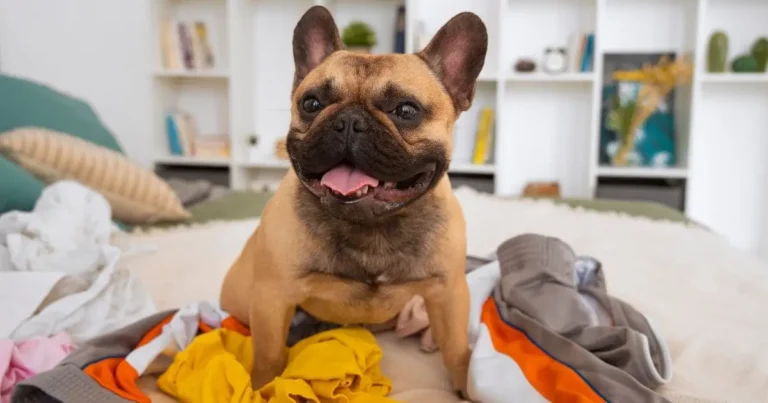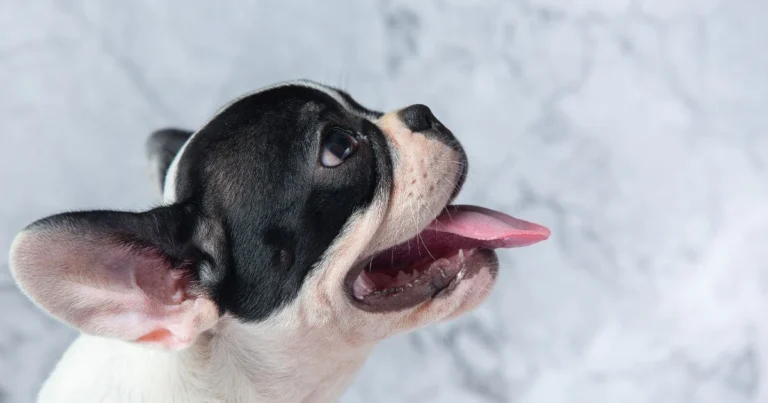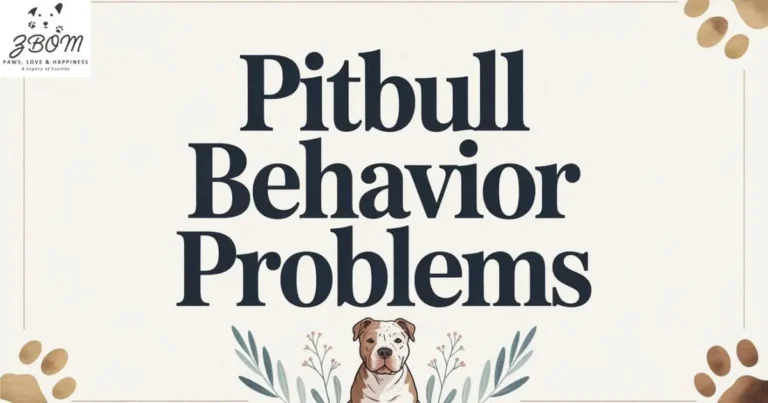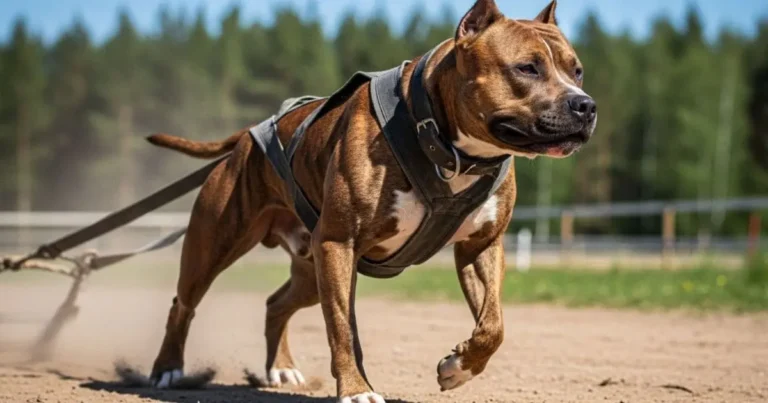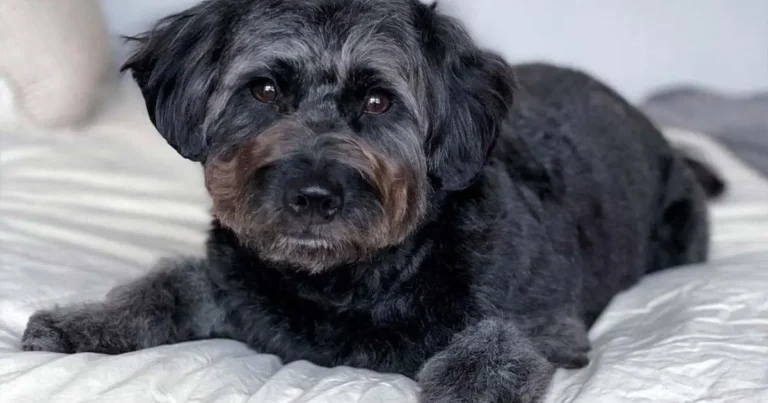
How To Cool Down A French Bulldog
How To Cool Down A French Bulldog are wonderful companions with their bat-like ears, wrinkled faces, and playful personalities, but these adorable features come with a serious responsibility. If you own a Frenchie, you’ve probably noticed how quickly they start panting on warm days or after just a few minutes of play. This isn’t just your dog being dramatic—French Bulldogs are genuinely vulnerable to overheating, and it’s something every owner needs to understand.
The problem comes down to their anatomy. Those cute, pushed-in faces that make French Bulldogs so distinctive also make it incredibly difficult for them to breathe efficiently and regulate their body temperature. Unlike dogs with longer snouts, Frenchies can’t cool themselves down effectively through panting. Add their compact, muscular bodies and narrow airways into the mix, and you’ve got a breed that can overheat in situations where other dogs would be perfectly fine.
I’ve seen too many Frenchie owners learn this lesson the hard way—a walk that seemed harmless turns into a veterinary emergency, or a warm afternoon in the yard becomes dangerous because the warning signs were missed. The good news is that overheating is completely preventable when you know what to watch for and how to respond.
This guide will walk you through everything you need to know about keeping your how to cool down a French Bulldog and safe. We’ll cover the warning signs of overheating, immediate cooling techniques that actually work, and practical strategies to prevent problems before they start. Whether you’re a first-time Frenchie owner or you’ve had your pup for years, understanding how to manage their temperature could literally save their life.
Also Read: How to Choose the Best Whelping Box French Bulldogs
Short Answer About Why is it important to keep your dog cool in summer?
Dogs don’t sweat like we do—they only have a few sweat glands in their paw pads, which barely help with cooling. Instead, they rely almost entirely on panting to regulate their body temperature. When the weather gets hot, this system can quickly become overwhelmed, especially on humid days when panting doesn’t work as efficiently.
Overheating in dogs isn’t just uncomfortable—it’s genuinely dangerous. When a dog’s body temperature climbs too high, it can lead to heatstroke, which damages internal organs, affects the brain, and can be fatal within minutes. Even before reaching that critical point, excessive heat puts serious strain on your dog’s heart and respiratory system.
Why is it important to keep your dog cool in summer?

Dogs face serious risk when exposed to hot weather, and their ability to cope with rising temperatures is far more limited than ours. Heatstroke remains one of the most dangerous summer threats to canine health, how to cool down a French Bulldog and every dog owner needs to understand how quickly this condition can turn fatal.
When a dog’s internal temperature rises beyond normal levels, the consequences can be devastating. Unlike humans who sweat efficiently, dogs struggle with temperature regulation, relying mainly on panting to cool down. During extreme heat, this system often fails, leading to heat stress that escalates into full-blown heatstroke.
The damage caused by heatstroke affects multiple systems simultaneously. As body temperature climbs, internal organs begin to fail—the brain, kidneys, liver, and heart all suffer from heat complications. This organ failure happens rapidly, and without immediate veterinary treatment, the results are often tragic. The sobering reality is that canine heatstroke kills, and the mortality rate is alarming: 1 in 7 dogs taken to emergency vets with this condition die, making it a true heat danger that demands our attention.
Heat victims often show signs of distress before reaching critical condition, but the window for intervention is shockingly narrow. What starts as mild overheating can progress to organ damage within minutes. Dog mortality from heat-related illness continues to rise each summer, with countless heat-related death cases that could have been prevented.
Also Read: How Old does a Dog have to be a Breed
Veterinary emergency rooms see a spike in heat fatality cases every year. Vets emphasize that dog safety during summer requires vigilance—avoiding summer dangers like hot cars, midday walks, and inadequate shade. The heat stress placed on a dog’s system during extreme temperatures creates a cascade effect where temperature rise leads directly to life-threatening complications.
Understanding this risk isn’t about creating fear—it’s about protecting our companions. Every dog owner must recognize that heatstroke is serious, it happens quickly, and veterinary care must be sought immediately when symptoms appear. The survival rate improves dramatically when treatment begins early, but too many dogs die simply because owners didn’t realize how fast their pet’s condition was deteriorating.
The bottom line: canine heatstroke is preventable, but once it occurs, how to cool down a French Bulldog it becomes a race against time where every second counts in preventing permanent damage or death.
Also Read: How to Determine French Bulldog Litter Size
Which dogs are more at risk?
While all dogs can develop heatstroke, research has identified specific physical characteristics and underlying conditions that create a higher chance of heat-related emergencies. Understanding breed predisposition and individual risk factors helps owners recognize when their pets are particularly vulnerable dogs requiring extra precautions.
High-Risk Breeds and Breed-Specific Risks
Veterinary cases consistently show certain breeds appearing more frequently in heat susceptibility statistics. Vets report that heat-prone breeds taken in as common victims include French Bulldogs, Bulldogs, Pugs, Chow Chows, Dogue de Bordeaux, Greyhounds, Boxers, English Springer Spaniels, Cavalier King Charles Spaniels, Golden Retrievers, and Staffordshire Bull Terriers. This breed vulnerability stems from various factors affecting their heat status.
Physical Characteristics That Increase Risk
Flat-faced or brachycephalic breeds face significant breathing problems due to their compressed airways, making temperature regulation extremely difficult. These dogs struggle with respiratory issues even in normal conditions, and heat amplifies these challenges dramatically.
How Much is a Franchie, Dog weight plays a crucial role—overweight dogs carry excess body mass that generates more heat and makes cooling harder. Canine obesity has become a major contributor to heat susceptibility, as heavy dogs work harder physically and overheat faster.
Size factor matters significantly, with bigger dogs, particularly large dogs over 50kg, showing elevated risk. These at-risk dogs have greater body mass to cool and often struggle more than smaller breeds.
Coat type and fur density create insulation problems. Dogs with longer fur or thicker fur trap heat against their bodies, preventing efficient cooling even how to cool down a French Bulldog when panting.
Age Factor and Energy Levels
Senior dogs and older dogs face increased risk due to declining health status and reduced ability to regulate temperature. Conversely, energetic and active dogs with high energy levels may push themselves too hard, not recognizing when they’re overheating until it’s too late.
Also Read: How Long are French Bulldogs Pregnant
Health Issues and Medical Conditions
Pre-existing conditions dramatically increase the chances dogs will develop heatstroke. Health complications include:
- Dehydration and dehydrated states that impair cooling mechanisms
- Heart problems and cardiac issues that strain circulation during heat stress
- Breathing problems and respiratory issues that limit effective panting
- Various medical conditions affecting overall health status
Dogs with any underlying conditions or health issues require careful monitoring, as these pre-existing conditions compound heat susceptibility.
Understanding Your Dog’s Risk Profile
The combination of breed predisposition, physical characteristics, age factor, size factor, and health complications determines individual risk. Recognizing whether your dog falls into these vulnerable dogs categories helps you take appropriate preventive measures and avoid situations where they might develop heatstroke.
Keeping your dog cool during walks on hot days
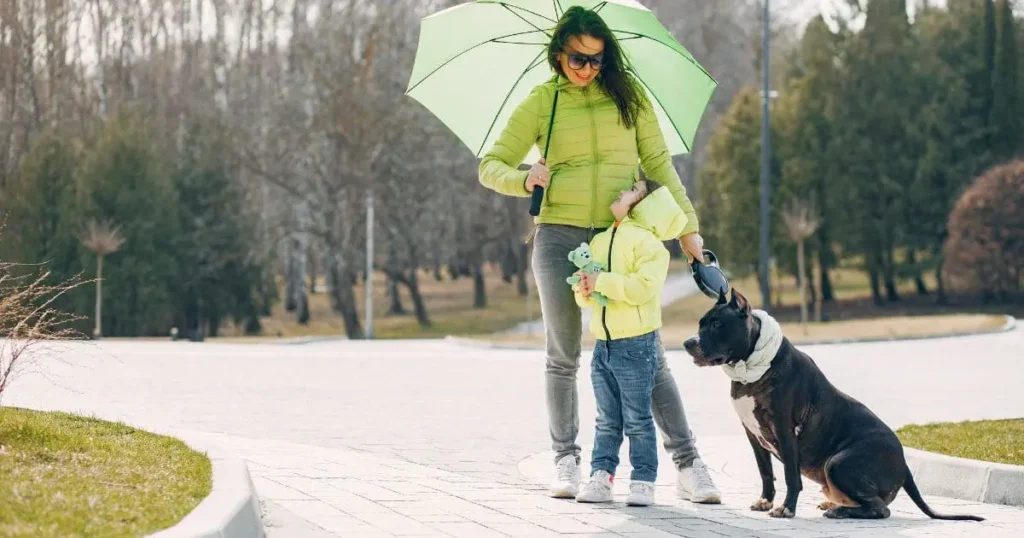
Exercise remains the most common cause of heatstroke in dogs, making proper exercise timing and heat prevention strategies essential during hot days and warm days. Understanding how to safely walk your dog when temperatures rise protects against this dangerous condition.
Also read: How Many Puppies do French Bulldogs Have
Smart Walking Time and Exercise Timing
To prevent heatstroke and avoid heat during peak heat hours, schedule morning walks in the early morning or evening walks when temperatures drop. Always avoid the midday sun, as exercising during these peak heat hours creates maximum dehydration risk and makes temperature control nearly impossible for dogs.
Essential Hydration and Water Supply
Always carry water and provide something for your dog to drink from during outdoor activity. Maintaining proper hydration prevents dehydration risk, as dehydrated dogs struggle significantly with body temperature regulation. Adequate dog water access throughout summer exercise is non-negotiable for dog safety measures.
Harness vs Collar: Impact on Breathing Efficiency
Consider attaching a lead to a walking harness rather than directly to a collar. Leads pulling on collars can create airway restriction, pressing on airways and reducing cooling down effectiveness through breathing efficiency problems. This simple switch improves temperature management capabilities.
However, remember the legal requirement: dogs must wear a collar displaying the owner’s name and address when in public, as mandated by dog laws. Use both collar for identification tags and harness for the lead attachment.
Also Read: Why Does My Frenchie Keep Throwing Up
Exercise Caution with Vulnerable Dogs
Take special care when exercising unwell or sick dogs on hot days or warm days. These animals find it more difficult to control their body temperature and face elevated heatstroke risk. Dehydrated dogs particularly struggle with temperature control during any outdoor activity.
Heat Awareness and Heatstroke Symptoms
Know the signs of heatstroke and watch out for warning signs constantly. Maintaining heat awareness helps you recognize heatstroke symptoms before they become critical, allowing you to prevent heatstroke progression.
Pavement Safety and Surface Temperature
Hot pavement poses serious danger—pavements on hot days can burn your dog’s footpads, causing pavement burns and paw pads injuries. The ground heat absorbed how to cool down a French Bulldog by walking surfaces creates painful conditions.
Use the pavement test or hand test: place the back of your hand on the pavement for seven seconds. If it’s too painful for you to maintain contact, it’s too painful for your dog to walk on. This simple test reveals surface temperature dangers and guides safe walking decisions.
Comprehensive Heat Prevention Strategy
Implementing these dog safety measures—adjusting walking time, ensuring water supply, choosing proper harness equipment, understanding airway considerations, exercising caution with vulnerable animals, maintaining heat awareness, and testing pavement temperature—creates a complete heat prevention approach for summer exercise and outdoor activity management during hot days.
Also Read: How to Determine the Price of an Isabella French Bulldog
Keeping your dog cool in the garden
Spending time in your garden during a hot day offers wonderful opportunities to cool you and cool your dog down, but garden safety requires careful planning. Creating a safe outdoor space with proper outdoor cooling measures ensures your dog can enjoy garden activities while you prevent overheating.
Water Access and Hydration Station Setup
Remember to ensure there’s a water bowl for your dog to drink from—ideally establishing multiple water sources both inside and outside the house. Proper water placement matters significantly: put the water bowl in the shade to keep it as cool as possible. This shaded area placement maintains cool water temperatures and provides fresh water that encourages drinking. Setting up a proper hydration station with water access in various locations supports temperature relief throughout garden time.
Sun Protection and Shade Provision
Ensure your dog has a shaded space to keep them out of the sun. Adequate shelter from sun through a shaded area is essential—avoid sun exposure during peak heat by providing proper shade. This sun protection creates safe outdoor time where your dog can enjoy the garden while staying as cool as possible. Keep cool areas accessible so your dog can retreat when needed.
Also Read: How to Find Reputable French Bulldog breeders Michigan
Interactive Cooling and Water Play Activities
Garden cooling gets more enjoyable with cooling activities that help keep them cool:
Give your dog a paddling pool to splash around in—this pool for dogs provides excellent water fun and temperature relief. Play with your dog using the hose and let them enjoy getting wet through hose play. These water games create interactive cooling experiences where your dog can engage in water play while naturally cooling down. A wet dog is a cooler dog, and these cooling methods combine exercise with heat relief.
Greenhouse Danger and Enclosed Spaces
Keep your dog out of hot greenhouses, even if the door is left open. These buildings and enclosed spaces become incredibly warm due to trapped heat and greenhouse heat buildup. The greenhouse danger exists even with ventilation, as these structures concentrate heat to dangerous levels. Backyard safety means preventing access to any incredibly warm enclosed spaces.
Cooling Treats and Frozen Snacks
Try giving your dog homemade frozen treats to help keep them cool from the inside out. These cooling treats, ice treats, and frozen snacks provide temperature relief while offering enjoyable summer treats. DIY treats are simple cooling solutions that combine hydration with entertainment.
Comprehensive Garden Safety Strategy
Creating safe outdoor time involves combining proper water access, shade provision, how to cool down a French Bulldog cooling activities, awareness of greenhouse danger, and offering cooling treats. These cooling methods and cooling solutions work together for effective garden cooling and outdoor cooling, ensuring spending time in your garden remains safe and enjoyable on any hot day.
Also Read: How to Care for Your Pied Frenchies Effectively
Keeping your dog cool in the car and on long journeys
Even on warm days, a car can act as a greenhouse, with temperatures inside the car becoming much higher than outside. Understanding vehicle temperature dangers and the greenhouse effect is critical for car safety and dog travel safety.
The Hot Car Danger and Temperature Difference
The interior temperature in a car interior rises dramatically due to heat buildup, creating a hot car danger even when it feels mild outside. This temperature difference between inside and outside can be fatal, how to cool down a French Bulldog making proper vehicle safety protocols essential.
Never Leave Dogs Unattended
Always remember: never leave your dog in the car by themselves. An unattended dog faces extreme risk from rapidly rising temperatures inside, even with windows cracked. Never leave dogs alone in vehicles under any circumstances.
Creating a Safe and Comfortable Travel Environment
Make sure your dog has a safe, comfortable and cool spot in the car when you’re driving. Establishing a cool area with vehicle comfort ensures comfortable travel throughout your journey.
Travel Breaks and Monitoring
Make regular stops to check on your dog and ensure they have access to water. Stop frequently for travel breaks and water breaks, allowing you to monitor dog condition and provide water availability. Travel with cool water or cold water in a thermos or insulated container to give to your dog during these stops.
Travel Timing and Peak Heat Avoidance
Avoid travelling during the hottest times of the day. Smart travel timing and journey planning means avoid peak hours when temperatures reach dangerous levels. Try not to travel on hot days when possible.
Proper Ventilation and Climate Control
Drive with the windows open or the air conditioning on to maintain proper ventilation and temperature control. Window ventilation and AC usage are essential cooling strategies for a cooler vehicle. Use window sunshades to help reflect the sun’s rays and keep the car cooler when travelling. These sunshade benefits include sun blocking and heat reflection that significantly reduce car interior heat buildup.
Also Read: A Comprehensive Guide to Understanding EM EM French Bulldog DNA
Public Transportation Considerations
When using public transport, try not to travel on hot days or, if possible, check that the public transport you intend to use is air conditioned. Public transportation options like bus travel and train travel should offer air-conditioned transport for safe transport of your dog during warm weather.
Travel Planning and Accommodation
Check that all places you want to visit are dog friendly so that you can take your dog in with you. Proper accommodation planning ensures you can bring dog inside rather than leaving them in the vehicle. Researching pet-friendly places and dog-allowed locations is essential travel planning for safe car travel.
Comprehensive Vehicle Safety Strategy
Protecting dogs during car travel requires combining these cooling strategies: never leaving dogs unattended, ensuring comfortable travel conditions, making frequent stops, providing water availability through insulated containers, timing travel to avoid peak heat, maintaining climate control through AC usage and window ventilation, using sun protection like sunshades, choosing air-conditioned public transportation, and planning visits to pet-friendly places.
These measures work together to combat the greenhouse effect and hot car danger, how to cool down a French Bulldog ensuring safe transport on any warm days.
Keeping your dog cool in the house?
During warm summer days it’s easy for your house to warm up, creating challenges for indoor temperature management. Some dogs may be able to cope with this rise in temperature and handle heat indoors, while others may struggle with heat tolerance. Understanding how different dogs respond to home heating and temperature rise helps you implement effective indoor cooling strategies.
Water Access and Hydration Solutions
On hot days remember to ensure your dog always has access to drinking water. Constant water availability is fundamental to coping with heat. Add ice cubes to your dog’s water bowls to create ice water and frozen water that provides cooling water throughout the day. These cold water bowls offer refreshing hydration that helps combat rising house temperature.
Frozen Toys and Cooling Chews
Freeze a dog toy and let them chew on it—chew on it activities provide entertainment while cooling. These frozen toys, ice toys, and chew toys double as cooling chews that help dogs manage heat indoors while keeping them occupied.
Damp Towels and Cool Surfaces
Put down damp towels for your dog to lie on, creating a cool surface and lying surface that provides immediate relief. Wet towels and damp fabric offer effective towel cooling that helps regulate body temperature. Dogs appreciate having a comfortable place to lie on during peak heat.
Also read: What are Fluffy Frenchies Mixed with
Coat Management and Grooming
If your dog has a long coat or heavy coat, you could keep them clipped to make them feel more comfortable. Understanding coat length and thick fur impact on heat tolerance guides grooming decisions. Clipping and trimming coat through proper coat maintenance significantly improves comfort level and dog comfort during warm summer days.
Indoor Placement and Conservatory Dangers
Keep dogs out of hot conservatories—these indoor spaces trap conservatory heat, creating conservatory danger even when other areas remain tolerable. Avoid housing your dog in direct sunlight and prevent direct sun and sunlight exposure through careful housing location and indoor placement choices. Sun avoidance within your home is essential for home safety.
Comprehensive Indoor Heat Management
Managing indoor environment during summer home care requires multiple cooling tips and home cooling methods. Keeping cool indoors involves addressing house temperature through temperature control indoors strategies that prevent indoor overheating. The combination of ensuring water access with ice cubes, providing frozen toys, offering damp towels, considering grooming for thick fur, avoiding conservatory heat, and preventing sunlight exposure creates effective indoor heat management.
Are Franchies Born with Tails, Understanding that some dogs struggle with heat while others cope better helps you assess individual heat tolerance and adjust indoor safety measures accordingly. These indoor cooling approaches work together for successful heat management, ensuring all dogs—whether they naturally cope with temperature rise or struggle with heat—remain comfortable during warm summer days as your house naturally warms up.
keeping your dog cool at the beach

When visiting the beach with your dog on hot days, proper planning ensures a safe beach visit and enjoyable beach time while managing heatstroke risk. Understanding beach timing and heat management beach strategies protects your dog during seaside visit and coastal outing adventures.
Beach Timing and Cooler Times
Remember to go to the beach when it’s cooler, such as in the early morning or early evening. Morning beach and evening beach visits help avoid the midday sun and peak sun exposure. Smart beach timing means choosing cooler times that make the beach day safer and more comfortable in hot weather.
Sun Protection and Shade Access
Take a sun tent or beach umbrella to ensure there’s always an area of shade for your dog to get out of the hot sun. Providing sun shelter through portable shade and umbrella shade creates a shaded area where your dog can find sun escape. This shade access and sun protection are essential for beach environment safety during summer beach outings.
Also Read: How to Train a Deformed French Bulldog Effectively
Water Supply and Hydration Management
Take plenty of fresh water with you—fresh drinking water and proper water supply are critical. If possible, take ice cubes in a cool bag to drop into their water, creating ice water and cooled water. Alternatively, store cold water in a thermos or insulated flask to keep it cool, ensuring temperature maintenance throughout your beach visit. This cooling water helps with proper hydration during beach activities.
Ensure your dog has plenty of water breaks to keep them hydrated. Regular water through hydration breaks at water intervals helps them how to cool down a French Bulldog stay hydrated in the beach environment.
Exercise Limits and Heatstroke Prevention
Don’t exercise your dog too much—over exercising and excessive exercise create overexertion risks. Exercise caution with physical activity, as over exercising on hot days is the main cause of heatstroke in dogs. Understanding exercise limits is crucial for heatstroke prevention and avoiding heat-related illness during beach time.
Ocean Cooling and Water Activities
Let them splash in the sea to cool down. Sea water and ocean splash provide excellent water cooling opportunities. Swim time and saltwater play offer natural ocean cooling that helps regulate body temperature during hot weather.
Water Safety Considerations
Remember to read water safety tips before you go to ensure beach safety and safe swimming. Understanding water safety and beach precautions protects your dog during all beach activities.
Also read: Allergic To French Bulldog: A Comprehensive Guide
Comprehensive Beach Safety Strategy
A successful beach day with your dog requires coordinating multiple elements: choosing cooler beach timing like early morning or early evening, bringing sun shelter for shade access, packing fresh drinking water with ice cubes in a cool bag or using a thermos, providing regular hydration breaks, exercising caution to avoid overexertion as the main cause of heatstroke in dogs, allowing ocean splash for water cooling, and following water safety tips.
These strategies work together for heatstroke prevention and heat management beach success, how to cool down a French Bulldog ensuring your seaside visit remains safe and enjoyable despite hot days.
Keeping your dog cool at night?

Most dogs are unlikely to develop heatstroke during the night, but on very hot and muggy evenings your dog can feel just as uncomfortable as you. Understanding night temperature challenges and muggy weather effects helps you create better nighttime comfort and sleeping arrangements for hot nights and uncomfortable nights when evening heat makes your dog feel uncomfortable.
Air Conditioning and Bedroom Cooling
So why not try letting your dog sleep in an air conditioned room? how to cool down a French Bulldog An AC room with air conditioning provides optimal bedroom cooling and temperature management night solutions, creating ideal overnight comfort during hot evening solutions needs.
Night Ventilation and Air Circulation
Keeping the windows open at night improves night ventilation and allows night air to provide evening cooling. Direct a fan towards your dog for enhanced fan cooling and air circulation. Proper fan direction maximizes airflow, and open windows create cross ventilation that supports house cooling and cooling home down efforts.
Damp Towel Cooling and Cool Bedding
Letting them lie on a slightly damp towel helps keep them cool through damp towel cooling. A wet towel provides cool bedding that offers immediate temperature relief, creating a more comfortable sleeping environment during very hot conditions.
Nighttime Hydration and Water Availability
Giving them access to water helps keep them hydrated throughout the night. Ensuring nighttime hydration through water availability and overnight water access prevents dehydration and supports sleep comfort during muggy evenings.
Sleep Location and Natural Choice
Letting them sleep where they want allows your dog may naturally choose the coolest place to sleep. This preferred sleeping area and sleep location might be on cool surfaces—this may be on tiled flooring or stone flooring. Tile floors and stone floors provide cool flooring that dogs instinctively seek as their sleeping spot during hot nights.
Frozen Toys and Bedtime Routine
Giving them a frozen chew toy to play with before bedtime incorporates nighttime toys and frozen toys into evening activities. This bedtime routine provides entertainment while offering cooling benefits.
Daytime Heat Prevention and Window Management
Keeping your curtains and blinds closed during the day prevents your home from warming up when it’s hottest. This window treatments strategy and blind management approach with curtains closed provides daytime cooling and heat prevention, helping trap heat outside during peak heat hours.
Then open your windows at night to help cool down your house. This nighttime ventilation strategy allows evening cooling and supports indoor cooling strategies that lower home temperature how to cool down a French Bulldog through natural night air circulation.
Comprehensive Nighttime Heat Management
Managing nighttime heat and humidity management during muggy weather requires combining multiple approaches: providing an air conditioned room for bedroom cooling, ensuring night ventilation through open windows and fan cooling with proper fan direction, offering damp towel cooling as cool bedding, maintaining nighttime hydration with water availability.
Allowing natural choice in sleep location where dogs may choose cool surfaces like tiled flooring or stone flooring, incorporating frozen chew toy into bedtime routine, and implementing window treatments by keeping curtains and blinds closed during the day to prevent home from warming up when it’s hottest, then opening windows at night for cross ventilation.
These indoor cooling strategies work together for effective temperature management night solutions, ensuring overnight comfort and sleep comfort even during very hot and muggy evenings when most dogs, though unlikely to develop heatstroke during the night, still feel just as uncomfortable as you in the sleeping environment.
Keeping your dog cool during a heatwave
Some dogs suffer in heat at the best of times, struggling even under normal conditions due to heat sensitivity and heat suffering. But when it’s exceptionally hot during summer heatwaves, the challenges intensify dramatically. Your dog may not be acclimatised to the sudden rise in temperature, creating a lack of acclimatization that makes them not acclimatized to handle the temperature spike and rapid temperature rise characteristic of heatwave conditions.
Understanding Acclimatization and Temperature Extremes
The sudden temperature change during exceptionally hot weather and extreme heat creates serious problems because dogs need an acclimatization period and adjustment period for proper heat adaptation and body adaptation. Without adequate heat acclimatization, dogs face increased risk and higher risk of heat-related danger during the heatwave period when temperature extremes occur.
Heatstroke Risk During Heatwaves
Dogs become more at risk of heatstroke during a heatwave due to the extreme temperature and summer extreme heat conditions. This heightened risk means vulnerable dogs face dramatically increased chances of developing heatstroke and heatstroke development. Understanding this heatstroke risk is essential for heatwave safety.
Critical Heatwave Precautions and Water Access
During a heatwave ensure your dog has access to water at all times. Ensure access to adequate water access and hydration access becomes absolutely critical during exceptionally hot weather. How to cool down a French Bulldog this fundamental heatwave precaution helps dogs cope with extreme heat conditions.
Exercise Caution and Exercise Limits
Be especially cautious about how much exercise to give them when you take them out for a walk. Exercise amount and exercise quantity require extra caution and careful consideration of exercise limits during heatwave conditions. Understanding appropriate walking time and walk duration prevents dangerous situations during outdoor walks.
Avoiding Peak Heat and Excessive Exercise
Too much exercise creates immediate danger—excessive exercise and over-exercise during a heatwave can dramatically raise and significantly raise your dog’s chance of heatstroke and chance of developing heatstroke. This risk multiplies especially during the hottest parts of the day when peak heat, hottest time, midday heat, and day heat reach temperature extremes.
The combination of too much exercise, how to cool down a French Bulldog especially during peak heat periods, can dramatically increase heatstroke development and the risk of developing heat-related complications in dogs that may not be acclimatised to the sudden rise in temperature.
Comprehensive Heatwave Safety Strategy
Protecting dogs during summer heatwaves and exceptionally hot weather requires understanding that some dogs suffer in heat even at the best of times under normal conditions. When extreme heat arrives during the heatwave period, your dog faces increased risk because they may not be acclimatised to the sudden temperature change and rapid temperature rise, creating a lack of acclimatization without proper adjustment period for heat adaptation and body adaptation.
Essential heatwave precautions include: ensuring your dog has access to water for constant water access and hydration access, being especially cautious about exercise amount and exercise quantity by limiting walking time and walk duration, avoiding excessive exercise and over-exercise, and staying away from outdoor walks especially during the hottest parts of the day when peak heat, hottest time, and midday heat create day heat conditions that can dramatically raise and significantly raise the dog’s chance and chance of heatstroke.
These heatwave safety measures protect vulnerable dogs from heightened risk of developing heatstroke and heatstroke development during exceptionally hot weather, extreme temperature, and summer extreme heat when temperature extremes and heatwave conditions create maximum heat-related danger for dogs showing heat sensitivity and heat suffering, particularly those not acclimatized to the temperature spike and sudden rise in temperature characteristic of the heatwave period.
Signs of heatstroke
Signs of heatstroke can progress quickly through rapid progression and symptom progression, making recognition crucial for survival. Understanding these warning signs and heatstroke symptoms helps you recognize heatstroke and suspect heatstroke before it becomes fatal.
Early and Critical Signs to Watch For
The emergency symptoms and critical signs can include multiple indicators:
Respiratory Symptoms: Heavy panting, even when not exercising, indicates excessive panting and panting at rest. Breathing problems and breathing difficulties create respiratory distress, particularly in flat-faced dogs and brachycephalic dogs whose airways are already compromised.
Physical Symptoms: Tiredness and lethargy reflect fatigue that worsens quickly. Stiffness and muscle stiffness lead to unwillingness to move, reluctance to move, and refusal to move as the condition progresses.
Neurological Symptoms: Dribbling and excessive drooling demonstrate salivation problems. Confusion, disorientation, and mental confusion indicate brain function is being affected. Not walking in a straight line shows unsteady gait, walking problems, and coordination issues. Collapse and collapsing represent loss of consciousness, while fitting, seizures, and convulsions indicate severe neurological damage.
Gastrointestinal Symptoms: Being sick shows vomiting that can be bloody, appearing as bloody vomit. Upset stomach indicates diarrhea and gastrointestinal symptoms that can be bloody, presenting as bloody diarrhea.
Immediate Action and Emergency Response
If you think your dog may have heatstroke, it’s vital that you immediately contact your vet while cooling them down. This immediate action and emergency response require you to contact veterinarian or vet immediately for veterinary contact while beginning the cooling process and simultaneous cooling.
The Critical Importance of Early Intervention
Getting early advice and treatment is essential to saving a dog’s life. Early intervention and prompt treatment through veterinary treatment and critical treatment provide life-saving care that dramatically affects prognosis and survival chance.
Survival Rates and Veterinary Statistics
Research has found significant UK statistics and veterinary statistics about survival rates and mortality rate. In the UK, although 1 in 7 dogs that are taken to vets with heatstroke die—a concerning death rate—98% that are seen early with mild signs and mild symptoms are likely to survive, demonstrating a high survival rate with early detection.
Understanding the Statistics
These survival rates reveal that early detection transforms outcomes. While the overall mortality rate shows 1 in 7 dogs taken to vets with heatstroke die, the 98% survival chance for those seen early with mild symptoms proves that recognizing warning signs and emergency symptoms early, then taking immediate action for emergency response by immediately contacting your vet while cooling them down, is essential and vital for saving a dog’s life.
The dramatic difference between overall death rate and the high survival rate with early intervention emphasizes that getting early advice and prompt treatment through veterinary contact and veterinary treatment represents critical treatment that is life-saving when you recognize heatstroke and suspect heatstroke quickly as signs of heatstroke can progress quickly through rapid progression and symptom progression.
What to do if your dog has heatstroke
Any dog with heatstroke should be seen by a vet immediately for immediate veterinary care and emergency vet visit. This is particularly critical if they are very unwell, severely ill, or unconscious with loss of consciousness. If you don’t know where your closest vet is, you can find a vet near you here using a vet locator to locate vet and find veterinarian services as a nearby vet.
The Critical Importance of Immediate Cooling
It is important that you start to cool your dog as soon as possible—cooling immediately and start cooling can make a big difference to whether they survive. How to cool down a French Bulldog these actions are critical for survival and dramatically affect survival odds.
Essential First Aid Tips and Emergency Steps
Here are tips on how to help a dog with heatstroke through proper heatstroke first aid and emergency steps:
Step 1: Stop Activity and Relocate
Stop them exercising immediately—cease exercise and stop activity. Move them out of the heat and into the shade for shade relocation. This remove from heat action and move to shade step prevents further temperature rise.
Step 2: Contact Veterinary Guidance
Call a vet for advice immediately. Phone vet and call for guidance to receive veterinary advice and professional advice. Always speak to your vet who can guide you through how best to help your dog with proper veterinary guidance and vet consultation on best practices.
Step 3: Positioning and Initial Hydration
Lay them down on a cool floor, cool surface, or cold surface for a proper cooling surface. Place on floor in a position that facilitates cooling. Offer them small amounts of water to drink for water intake, drinking water, and hydration attempts.
Step 4: Water Application and Cooling Methods
Carefully pour water over the dog’s body for direct water application and pour water cooling. Sponge them with a wet sponge if water is limited, using sponging and water conservation techniques. Particularly focus on target areas and focus areas including their neck, tummy, and inner thighs for effective neck cooling, belly cooling, and thigh cooling.
Ideally continue to do this and continue cooling until their breathing returns to normal, achieving breathing normalization and normal breathing. Make sure the dog doesn’t inhale any water while you’re trying to cool them down—prevent aspiration and avoid inhalation for water safety during active cooling.
Step 5: Air Circulation and Enhanced Cooling
Fan them with cool air for fan cooling and air circulation. Put them in an air-conditioned room, AC room with air conditioning, or car with vehicle AC if possible. The impact of fanning and fanning effectiveness, along with putting them somewhere that’s air-conditioned and cooling effectiveness, will be greatest if they’re already wet with wet fur or damp coat.
Understanding the Rapid Cooling Debate
It was previously thought that rapidly cooling and quick cooling an affected dog could cause them to go into shock, creating shock risk. This advice and outdated advice is now being questioned through questioned guidance. The rapid cooling debate continues, which is why you should always speak to your vet for current veterinary guidance on proper cooling technique and cooling methods that represent best practices for helping your dog.
Conclusion
Cooling down a French Bulldog requires a combination of preventive measures and immediate actions to ensure their comfort and health. Due to their brachycephalic nature, French Bulldogs are more susceptible to overheating, especially in hot weather.
To cool them down effectively, ensure they have access to plenty of fresh water, a shaded or cool environment, and avoid strenuous activity during the hottest parts of the day. Using cooling mats, misting them with water, and providing gentle fan or air conditioning can also help regulate their body temperature. Always keep an eye on signs of heat exhaustion, and if symptoms worsen, seek veterinary assistance immediately.
With the right care, you can help your French Bulldog stay safe and comfortable during warmer weather.
FAQ
What is the 7 second rule for dogs?
Use the seven second rule: place the back of your hand on the pavement. If it’s too hot to walk, avoid dogs riding in the pickup truck on hot pavement for dog safety.
How to cool an overheated bulldog?
If your dog is overheating, move them to a cool place and spray cool water on the coat to reach the skin for effective heat loss, advises Grebe.
How to cool a Frenchie down fast?
Spraying your dog with cold water helps lower body temperature. Use a spray bottle in a flat or a hose in a garden, if your dog likes it.
At what age do Frenchies calm down?
Most Frenchies show signs of calming down between 18 months to 2 years. Understanding French Bulldog maturity and behavioral development helps owners.
What is an aggressive French Bulldog behavior?
Eaten from 7 different containers, held and petted by 7 different people, taken 7 one-mile car rides, played with 7 different kinds of toys, and walked on 7 different substrates.


